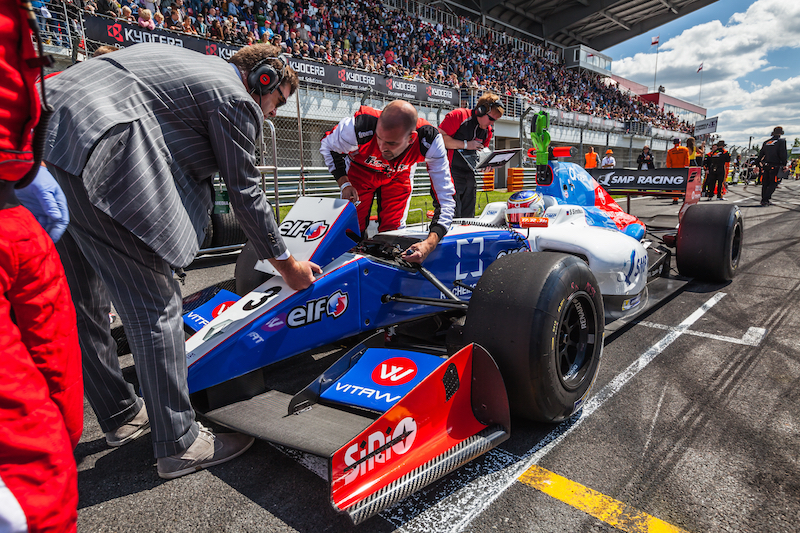For over 70 years, Formula One has been the pinnacle of motorsport racing. F1 cars have an average speed of 300 km/h and the ability to accelerate from 0 to 100 km/h in under five seconds. Apart from their unparalleled speed, these cars are also known for their sleek and shiny exteriors.
A typical F1 car consists of a single seat, open wheels and cockpit, and an engine placed behind the driver. The cars are constructed by the racing teams themselves based on the standards set by the FIA.
Fundamentally, F1 cars are similar to a regular automobile. They both have wheels, brakes, transmissions, and engines. But in an F1 car, all these parts are tweaked to survive extreme conditions and vibrations.
Chassis
Think of the chassis as the car’s skeleton. It is usually made from carbon fiber and ultra-lightweight components. Per FIA standards, its minimum weight is 740 kg. At least 80 kg of its total weight must be made up of the driver, his seat, and driving equipment.
F1 cars follow a monocoque construction, which is the process of building the entire chassis from a single material. Modern F1 cars are made of either carbon fiber over aluminum mesh or spun carbon fibers arranged in resin. It is crucial for the cars to be lightweight to allow flawless movements at extreme speed.
Engine
All F1 cars are required to use 1.6 L turbocharged V6 engines. All engine materials and components are strictly regulated by the FIA. The crankcase and the cylinder block, for example, have to be built from cast or wrought aluminum alloys. The camshafts and crankshaft should feature iron-based alloys while the valves should be made from cobalt, iron, or titanium-based alloys.
Wings
F1 cars are extremely aero-dependent. Wings can be adjusted to achieve the ideal balance between air resistance and downforce which keeps the car pressed against the track’s surface. This allows the car to safely turn and travel at high speed.
Tires
Racing tires are produced using soft rubber compounds which provide special gripping power as they heat up. That’s why the tires are warmed up before the race. Unfortunately, the hotter the tires, the less durable they become. F1 tires generally last up to 125 miles which is why drivers need to pit stop at least once during the race.
Steering Wheel
It is designed to perform a variety of functions including modifying brake pressure, changing gears, contacting the radio, and adjusting the fuel.
Transponders and cameras

With over 20 F1 cars running every race, it’s impossible for any human being to monitor race positions in real time.
By transmitting radio waves, transponders can track a car anywhere they are in the track and at what time. All within a ten-thousandth of a second. They are radar devices often made of complex fabricated circuit boards to ensure 100% reliability.
An F1 car usually comes with at least five cameras sending video feeds to each team. They use the footage to monitor where the cars are in relation to each other.
Every year, each F1 team employs around 600 people to build a single car. They ensure that every component is lighter, stronger, and more innovative than their competitors’. The result is a mix of aerodynamic configurations and cutting-edge technology that make some of the fastest and most innovative vehicles in the world.
